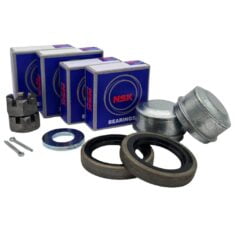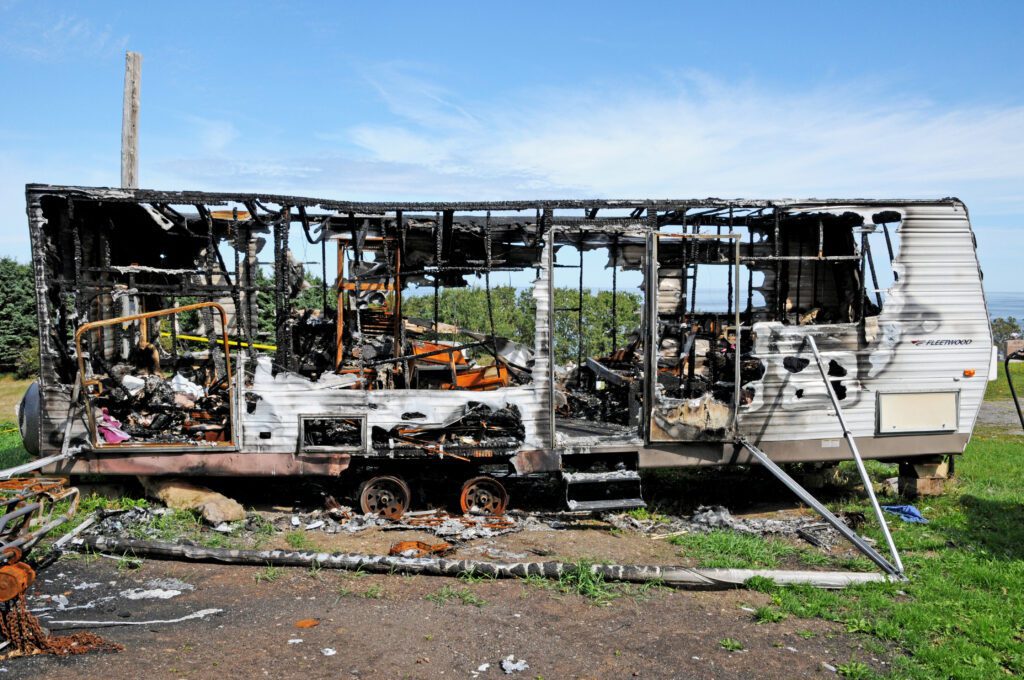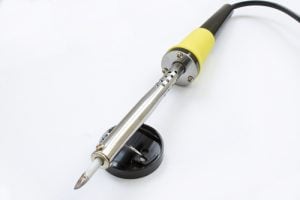
Hot Joints in Caravan Electrical Connections and Fire
Hot joints and oxidisation are common problems when inspecting electrical connections in your trailer plugs and inside a caravan.
A hot joint is an electrical connection that becomes loose over time or is connected by only a few strands in the connector ferrule.
For example, a small cable like 23/.0076 has 23 wire strands. If only eight strands of the cable are connected under the screw and the remainder of the wires are inside the terminal with no physical connection, a hot joint will be created.
Similarly, cables touching the ferrule may conduct electricity but are not connected. Once a load is applied, these cables can spark at full load, creating heat and, therefore, a hot joint.
One in a Million Error
Cable manufacturing is pretty straightforward until the operator runs out of cable.
Rather than having a 1/2″ drum of cable, some operators splice the end of the copper run onto the start of a new spool.
The joint is then encased in the insulation. Over time, this joint will become hot and ineffective, making it almost impossible to find.
How do I find it? Test voltages at the magnet by manually applying the electric brake controller.
Authorised Electrical Connections
Your caravan 240v is installed by an authorised electrician or an electrical contractor. The Australian Standard is AS3001, particularly AS3001:2008.
However, for voltages under 32v, an electrical licence is unnecessary.
Fire can just as easily be created from 32v as it can from 40v; for example, some older mobile phones were a fire hazard.
Fire hazards also exist in bad connections, undersized cabling, and wrong connectors.
Trailer Plugs
An inspection of your 7-Pin Towbar Socket will likely identify white powder around the male and female plugs.
This white powder is zinc oxide.
Zinc oxide is not a conductor of electricity. The zinc oxide has released from the zinc coating on your connector over time.
There is no way to fix oxidation other than to replace the connectors.
If not replaced, your trailer lighting will suffer intermittent failure, hot joints may appear, and your brakes will suffer significant voltage over 12v.
Before replacing the connectors, ensure your brake cabling is 5 or 6mm to ensure 12v is under load at your magnet.
This article covers how to correctly install a trailer plug or socket. Most plugs are installed incorrectly. A few common-sense procedures will ensure your connections last as long as you own your rig.
Undersized Cabling
An Anderson plug rated at 50A is common for connecting caravans to towing vehicles.
These plugs replace 4 or even 6-mm cabling to support 12v electrical systems within the caravan.
AS owners add appliances to their caravans, the v electrical installation must also be upgraded. A quick visual of plugs and wiring will quickly identify problems.
Caravan Connection
The electrical connection inside caravans is likely to be covered by Australian Standards AS3001. My old electrical days tell me that double-insulated 2.5mm cable is used for power and up to 1.5mm for lightning.
Double pole switches are to be used on all power points and light switches.
The cabling wire inside your caravan has thicker strands than those used in your trailer. Hot joints are not so common.
It is still good to be aware of the connection procedure for all cabling in your rig, as solar power is likely to be installed at some stage.
 Connection Procedure
Connection Procedure
- Cut back the outer sheath so that it does not protrude outside the sheath cover.
- Insert the cable fully into the back of the ferrule.
- Measure the cut on the cable cores.
- Take your time; this is not a rush job.
- Twist the cores and then solder the cores together so a robust electrical bond exists.
- Clamp the sheath cover into position.
- Use long nose pliers to neatly place the cable into the cable ferrule.
- Lock the terminal screw onto the soldered joint.
- Repeat for every cable.
- Replace sheath housing.
Question
Why is a soldered joint better than a screwed connection on bare cable?
In a few words; vibration fatigue. Read more about vibration fatigue here.
Cabling in aircraft and other equipment exposed to extreme vibration fatigue is soldered, inserted into a spade or connector, and then crimped. This procedure greatly prevents hot joints.
I think a caravan on an outback dirt road experiences more vibration than a Military Combat F15 flying mission in Syria. AL-KO outback rebound springs are made for such conditions.
A boat trailer will experience as much salt as trawlers on the TV series The Deadliest Catch.
Electrical joints that are not soldered are guaranteed to fail at some point. Failure will occur via corrosion, oxidation, hot joint, or fire.
If, like me, you rushed the electrical connections on your trailer, caravan, or boat trailer, please take an hour to do them correctly.
Is an ounce of prevention worth a ton of cure? Absolutely!
In conclusion, soldered electrical joints ensure a 100% effective electrical system.
Finally, an interesting article on vibration fatigue in caravans.



0 Comments